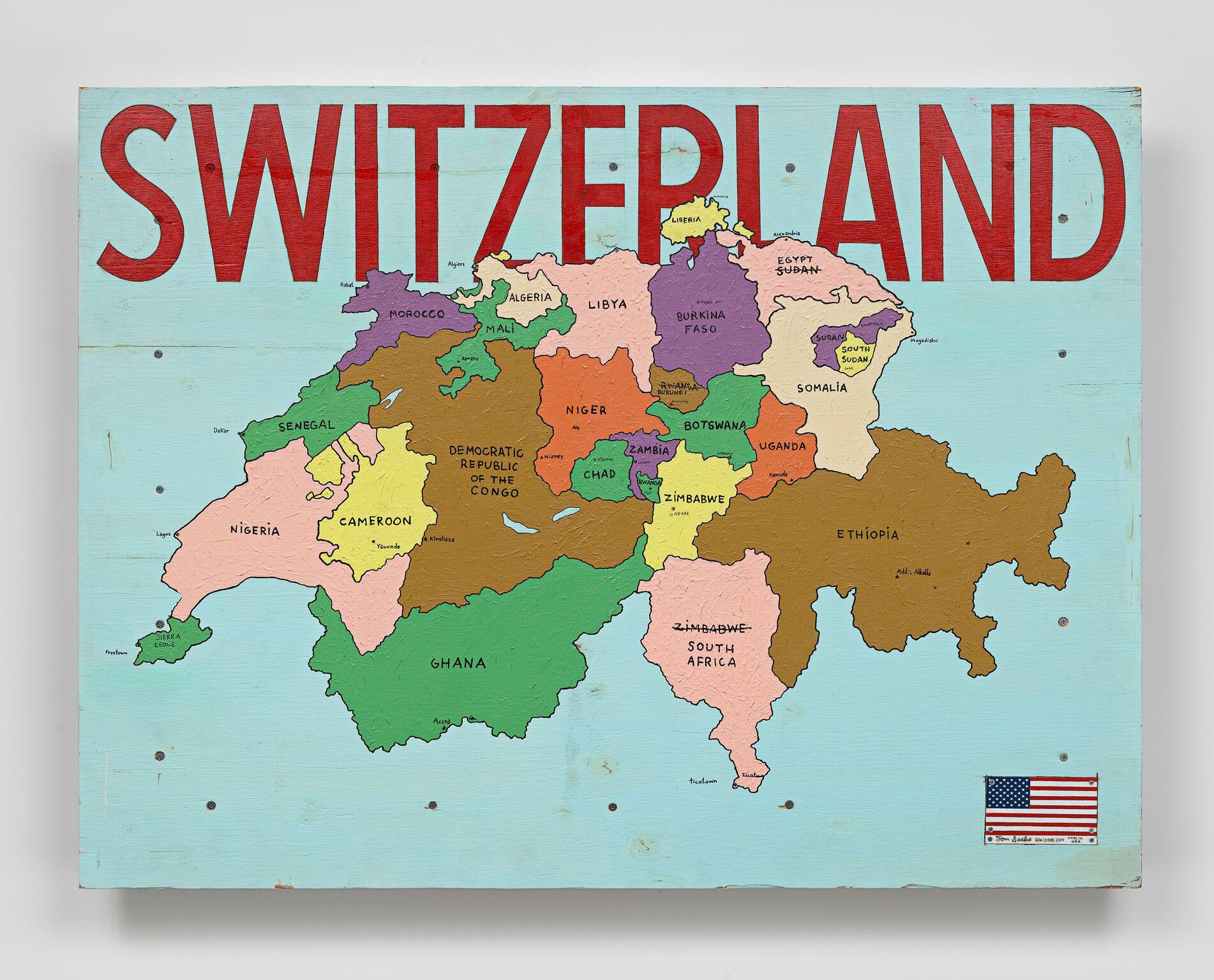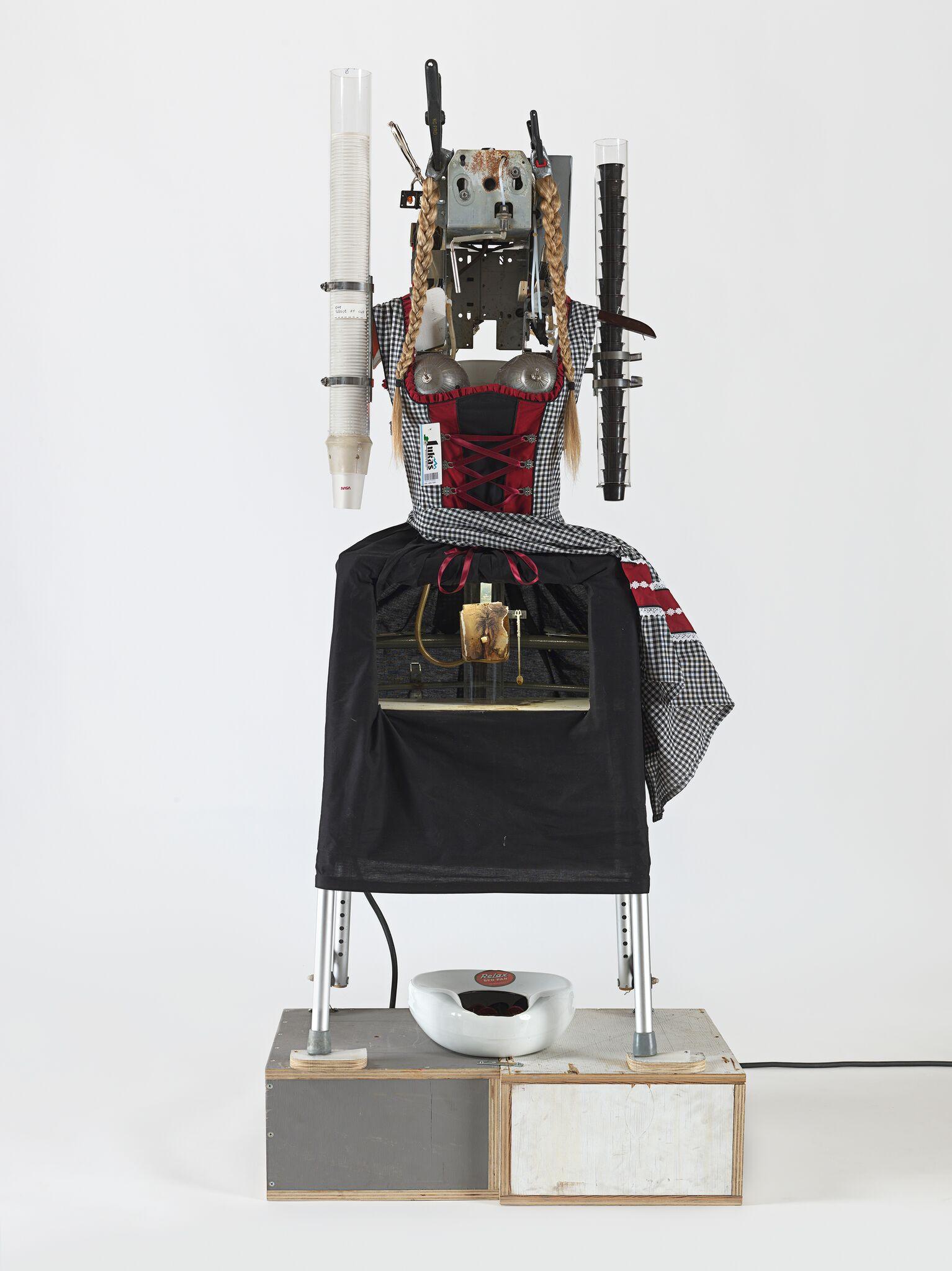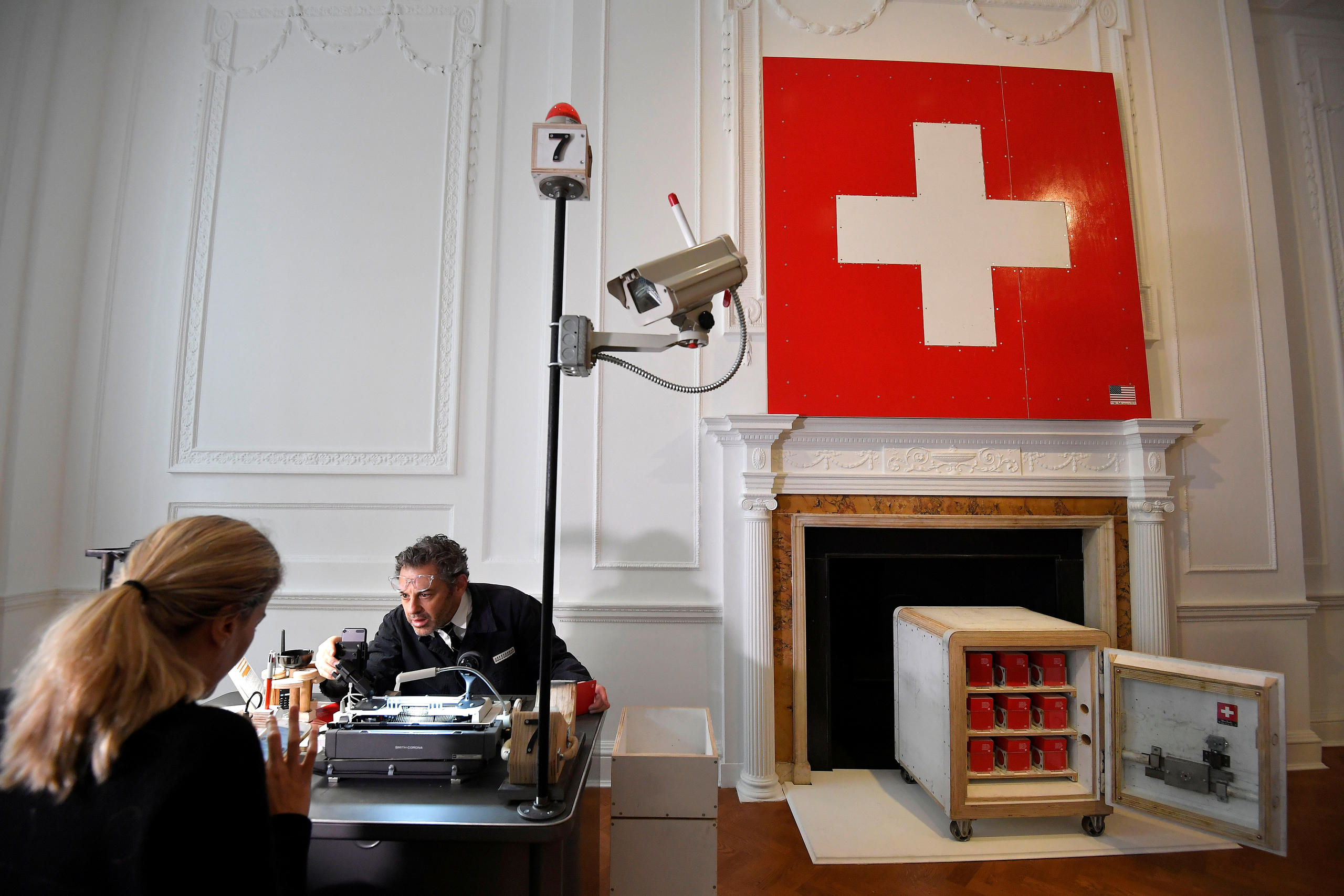
US artist deconstructs the myth of Swiss perfection

New York artist Tom Sachs, who has previously printed “Nuke the Swiss” stickers and 'sold' fake Swiss passports, has turned his attention to Switzerland once again with an exhibition in St Moritz.
In “The Pack”, which runs at the Vito Schnabel GalleryExternal link until February 3, Sachs employs his signature technique of bricolage, assembling materials to construct objects that critique modernity and the “pristine bliss” that stands at the heart of what he sees as the Swiss brand.

In the sculpture Heidi (2018), the wholesome 19th-century folklore heroine is refashioned as a symbol of sensuousness and arousal – ubiquitous 21st-century commodities, according to the gallery. “The milkmaid and the open jug from which she pours are well-established stand-ins for female anatomy, fertility and eroticism. Sachs makes these references explicit, transforming the milkmaid into a faceless coffee-making robot that expels caffeine from her exposed spout,” it explains.
In the painting Switzerland (2018), Sachs renames Switzerland’s 26 cantons after African countries, proposing a redistribution of wealth.
“What if Sierra Leone, where more than half the population lives below the poverty line, was freed from economic distress via the advantage of the legendary infrastructure of Geneva, Europe’s trade and financial centre?” the gallery asks in a press release. “What if Burundi, one of the world’s poorest nations now struggling to emerge from a devastating 12-year, ethnic-based civil war, had the resources of Zug, a sleepy Swiss town that has become its nation’s wealthiest canton?”
Passport project
Switzerland has long held fascination for 52-year-old Sachs, who, according to the gallery, “has been drawn to its reputation as a global model of wealth and economic prowess; political neutrality in global affairs; standards of health and living; leadership in technology, architecture, and engineering; first-class transportation and infrastructure; and protected landscapes of sublime natural beauty”.
In 1996, he released a load of “Nuke the Swiss” stickers with the intention, he says, of highlighting “how absurd it is to call for the bombing of a country in which many people keep their money”.
Last October, he put his own stamp on one of the world’s most coveted travel documents: the Swiss passport.
After making appearances in Brooklyn and San Francisco, he took his installation called “Swiss Passport Office”, to London. Set up on the sidelines of the annual Frieze Art Fair, there was a 24-hour period when visitors could line up and pay €20 (CHF22.50) to be questioned and issued one of the little red booklets.
Sachs said in a statement that the project aimed to expose the artificiality of borders “at a time when our liberal democracies are being threatened and oppressed people all over the world live in danger and without refuge”.

More
Why the Swiss feds are OK with these fake passports

In compliance with the JTI standards
More: SWI swissinfo.ch certified by the Journalism Trust Initiative






























You can find an overview of ongoing debates with our journalists here . Please join us!
If you want to start a conversation about a topic raised in this article or want to report factual errors, email us at english@swissinfo.ch.